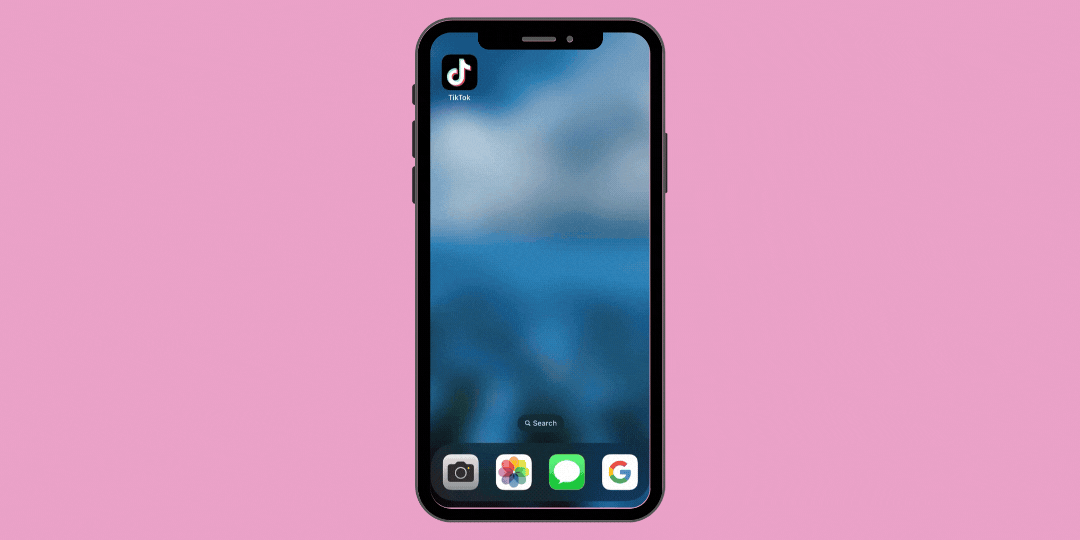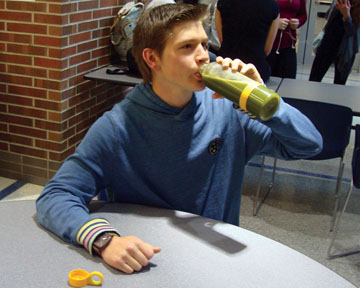At the beginning of the school year, junior Cole Stark did not drink as much water and, instead, got his nutrients by drinking fruit and vegetable juice brands like Naked. However, this process, he said, was not working for him.
“They taste so good, so people want to believe that they are healthy, but (there are) so many nutrients that aren’t in there,” Stark said.
Stark said he remembered Tony Robbins, a motivational speaker he saw in the summers of 2013 and 2012 in San Jose, CA, who recommended green juicing to his audience.

Green juicing is the process of creating an easily digestible drink filled with raw nutrients by pounding piles of vegetable or fruit produce and smashing the liquid out of it, according to vegnews.com.
Earlier this calendar year, Stark went on a three-day juice fast, meaning for three days he only drank water and juice that he made himself with fruits and vegetables around his house.
“Basically, I’ll put in anything I can find—celery, carrots, chlorophyll, kale or even spinach,” he said. “There are some formulas you find online, but I don’t go by any of those.”
“It was hard,” he said. “I only had water and about a liter of juice for an eight-hour school day.”
Stark is not alone at CHS in experimenting with green juicing. English teacher James O’Connor also tried juicing after he saw “Fat, Sick & Nearly Dead,” a documentary about an overweight and unhealthy man who goes on a 60-day juice cleanse.
“I bought a juicer and made the juice at my house,” O’Connor said. “I tried it for a couple days, and it felt good. You can get a lot of nutrients from vegetables that way.”
This trend is not isolated at CHS. According to Barron’s, juicing has become a $5 billion business and has grown by 4 to 8 percent a year since 2012. The trend is marked by a national move toward greater consumption of more raw and organic produce. A major part of this trend is the increase in sales of the bottled fruit and veggie juices, brands like Naked, sales of which totaled $2.25 billion in 2011, up 58 percent since 2004, according to Barron’s.
Sarah Smith, a marketer at Whole Foods Market in Carmel, has seen this trend growing at her store. According to Smith, in the last year alone, Whole Foods Market has acquired four to five new brands of fruit and veggie juices, including Suja Elements, which according to her, is very popular.
Suja Elements, which is sold exclusively at Whole Foods Market, is the fastest growing beverage company in the United States, with sales of $18 million in 2013 to an estimated $50 million this year, according to Forbes.
“There is definitely an increase in popularity for these types of products, and companies are filling that void by making more types of them,” Smith said.
According to Smith, many people find out about these juices while shopping for other products at Whole Foods Market.
“We have a fair amount of folks who are interested in our juices,” she said. “Customers have always thought of us as a healthier place, and having more nutritious options is something we’ve always done.”
thought of us as a healthier place, and having more nutritious options is something we’ve always done.”
According to Stark, however, these pre-juiced options are not as beneficial as organic juices made at home from raw produce.
“There are so many nutrients that aren’t in those that you think there are, but by juicing, you aren’t robbed because the stuff that isn’t blended by these people, like the stems of strawberries, contains nutrients that you get from juicing,” he said. “(Pre-juiced options) are still good for you, just not as good as people think.”
Smith said she has seen both people who make the juice on their own and people who buy the pre-made juice in her store.
“A lot of people like the convenience of being able to buy a bottled juice, but some prefer to make it on their own,” she said.
Stark said he has seen a lot of benefits from juicing since he started the diet.
“My sleeping is a lot better,”
Stark said. “When I do it with healthy foods that go with it, I do see a big increase in my energy levels and it definitely alters my mood.”
Although juice fasts, as well as bottled juice brands such as Suja Elements, are often thought of as substitutes for meals, Stark does not agree with just drinking juice for nourishment.
“I think you should incorporate (juicing) into your meals. It shouldn’t just be your meal. When I did the fast, I lost a lot of energy,” he said.
Stark also said that it was because he was helped so tremendously by the juicing that he wanted to take it to, as he put it, “the next level,” which he now sees as a mistake.
“You need food with it too,” Stark said.
 Some research supports Stark’s opinion as well. According to Health.com, even when fiber is added to juice, it is still not as filling as whole produce.
Some research supports Stark’s opinion as well. According to Health.com, even when fiber is added to juice, it is still not as filling as whole produce.
One possible drawback to green juicing is how expensive the juice can be. According to Health.com, one ready-to-drink bottle of green juice can cost anywhere from $3.50 to $11, and a good home made juicer can cost up to $500 or more.
Despite this, Stark contends that juicing does not necessarily break the bank.
“The juicing is actually pretty affordable. If you go to places like Costco, you can buy ingredients like strawberries in big packs. It’s very affordable if you are looking to do it long term,” he said.
Smith also sees customers buying ingredients to make juice in bulk at Whole Foods Market.
“We have people who will buy 20 bags of (vegetables) at once,” Smith said.
Stark also said he thinks the trend is often frowned upon by people he knows.
“A lot of my friends think it’s weird. What they see (is) this weird green shake, but it’s so nutritious,” he said.































![AI in films like "The Brutalist" is convenient, but shouldn’t take priority [opinion]](https://hilite.org/wp-content/uploads/2025/02/catherine-cover-1200x471.jpg)













































![Review: “The Immortal Soul Salvage Yard:” A criminally underrated poetry collection [MUSE]](https://hilite.org/wp-content/uploads/2025/03/71cju6TvqmL._AC_UF10001000_QL80_.jpg)
![Review: "Dog Man" is Unapologetically Chaotic [MUSE]](https://hilite.org/wp-content/uploads/2025/03/dogman-1200x700.jpg)
![Review: "Ne Zha 2": The WeChat family reunion I didn’t know I needed [MUSE]](https://hilite.org/wp-content/uploads/2025/03/unnamed-4.png)
![Review in Print: Maripaz Villar brings a delightfully unique style to the world of WEBTOON [MUSE]](https://hilite.org/wp-content/uploads/2023/12/maripazcover-1200x960.jpg)
![Review: “The Sword of Kaigen” is a masterpiece [MUSE]](https://hilite.org/wp-content/uploads/2023/11/Screenshot-2023-11-26-201051.png)
![Review: Gateron Oil Kings, great linear switches, okay price [MUSE]](https://hilite.org/wp-content/uploads/2023/11/Screenshot-2023-11-26-200553.png)
![Review: “A Haunting in Venice” is a significant improvement from other Agatha Christie adaptations [MUSE]](https://hilite.org/wp-content/uploads/2023/11/e7ee2938a6d422669771bce6d8088521.jpg)
![Review: A Thanksgiving story from elementary school, still just as interesting [MUSE]](https://hilite.org/wp-content/uploads/2023/11/Screenshot-2023-11-26-195514-987x1200.png)
![Review: "When I Fly Towards You", cute, uplifting youth drama [MUSE]](https://hilite.org/wp-content/uploads/2023/09/When-I-Fly-Towards-You-Chinese-drama.png)
![Postcards from Muse: Hawaii Travel Diary [MUSE]](https://hilite.org/wp-content/uploads/2023/09/My-project-1-1200x1200.jpg)
![Review: "Ladybug & Cat Noir: The Movie," departure from original show [MUSE]](https://hilite.org/wp-content/uploads/2023/09/Ladybug__Cat_Noir_-_The_Movie_poster.jpg)
![Review in Print: "Hidden Love" is the cute, uplifting drama everyone needs [MUSE]](https://hilite.org/wp-content/uploads/2023/09/hiddenlovecover-e1693597208225-1030x1200.png)
![Review in Print: "Heartstopper" is the heartwarming queer romance we all need [MUSE]](https://hilite.org/wp-content/uploads/2023/08/museheartstoppercover-1200x654.png)


